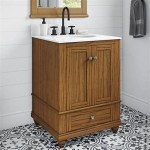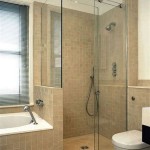Tongue and Groove Bathroom Walls: A Comprehensive Guide
Tongue and groove wall paneling offers a classic, versatile aesthetic suitable for various interior design styles. This article explores the benefits, installation process, and considerations for using tongue and groove in bathroom applications.
Benefits of Tongue and Groove Bathroom Walls
Tongue and groove's interlocking design provides inherent strength and stability, making it a durable wall covering. This construction minimizes seams, offering a clean, streamlined appearance. The method also facilitates relatively simple installation, even for DIY enthusiasts.
Beyond practicality, tongue and groove paneling adds a touch of timeless elegance to bathrooms. Its textured surface can enhance visual interest while offering design flexibility. This style complements a wide range of design aesthetics, from rustic farmhouse to modern minimalist.
Material Choices for Bathroom Tongue and Groove
Several materials are suitable for bathroom tongue and groove installations, each with its own characteristics and advantages.
Wood
Wood offers a natural warmth and beauty. Popular choices include cedar, redwood, and pine, known for their moisture resistance. However, wood requires regular sealing and maintenance to prevent water damage in the humid bathroom environment. Proper ventilation is also essential.
PVC
PVC (polyvinyl chloride) is a synthetic material that is highly water-resistant and impervious to rot and mildew. It's a low-maintenance option ideal for high-moisture areas. PVC tongue and groove comes in various colors and finishes, mimicking the look of natural wood.
MDF
MDF (medium-density fiberboard) is an engineered wood product made from wood fibers and resin. It is less expensive than solid wood and offers a smooth surface suitable for painting. However, MDF is susceptible to moisture damage if not adequately sealed and is best suited for bathrooms with good ventilation.
Installation Process for Tongue and Groove
Installing tongue and groove paneling involves several key steps:
Preparation
Begin by ensuring the bathroom walls are clean, dry, and level. Remove any existing wall coverings and repair any imperfections. Acclimate the tongue and groove boards to the bathroom environment for several days before installation.
Starting the Installation
Typically, installation starts in a corner. Apply construction adhesive to the back of the first board and position it against the wall, ensuring it's plumb and level. Secure it with nails or screws, countersinking the fasteners.
Continuing the Installation
Subsequent boards are fitted by inserting the tongue of the new board into the groove of the previous board. Continue this interlocking process across the wall, ensuring each board is snugly fitted and secured. Use spacers to maintain consistent gaps for expansion and contraction.
Finishing Touches
Once the installation is complete, conceal nail holes with wood putty. Apply sealant or paint as needed, depending on the chosen material. Consider adding trim or molding to complete the look.
Considerations for Bathroom Installations
Specific considerations apply to tongue and groove installations in bathrooms due to the inherent moisture and humidity.
Ventilation
Proper ventilation is paramount to prevent moisture buildup, which can lead to mold and mildew growth and damage the wall paneling. Ensure adequate ventilation through exhaust fans and open windows.
Sealing and Finishing
Protect wood tongue and groove with a waterproof sealant to prevent water damage. Reapply sealant periodically to maintain its effectiveness. PVC and MDF may also benefit from a sealant to enhance their moisture resistance.
Expansion and Contraction
Wood, in particular, is susceptible to expansion and contraction due to temperature and humidity fluctuations. Leave small gaps between boards and at the edges of the wall to accommodate this movement and prevent buckling.
Maintenance of Tongue and Groove Bathroom Walls
Maintaining tongue and groove walls ensures their longevity and preserves their aesthetic appeal.
Regular Cleaning
Regularly clean the walls with a damp cloth and mild detergent to remove dirt and grime. Avoid abrasive cleaners that can scratch the surface. Wipe up spills promptly to prevent water damage.
Inspection and Repair
Periodically inspect the walls for signs of damage, such as cracks, warping, or discoloration. Address any issues promptly to prevent further deterioration. Reapply sealant as needed to maintain water resistance.
Addressing Mold and Mildew
If mold or mildew appears, treat it immediately with a suitable cleaning solution. Improve ventilation to prevent recurrence. In severe cases, it may be necessary to replace affected boards.
Cost Considerations
The cost of tongue and groove bathroom walls varies depending on the chosen material, the size of the bathroom, and the complexity of the installation. Wood tends to be more expensive than PVC or MDF. Professional installation adds to the overall cost, while DIY installation can save money.

Tongue And Groove Panelling For Bathrooms Ideas Claire Douglas Styling

Bathroom Tongue And Groove Walls Design Ideas

How To Use Tongue And Groove Sims Hilditch

Tongue And Groove Wall Panels T G Multipanel

Tongue And Groove Panelling For Bathrooms Ideas Claire Douglas Styling

Vertical Tongue And Groove In The Bathroom Orc Week 3 Blushing Bungalow So Cute You Ll Blush

For The Love Of All Things Farmhouse Re Fabbed

Bathroom Wall Panelling Top Tips Roomix

Bathroom Wall Panel Installation Guide

Bathroom Tongue And Groove Walls Design Ideas
See Also







